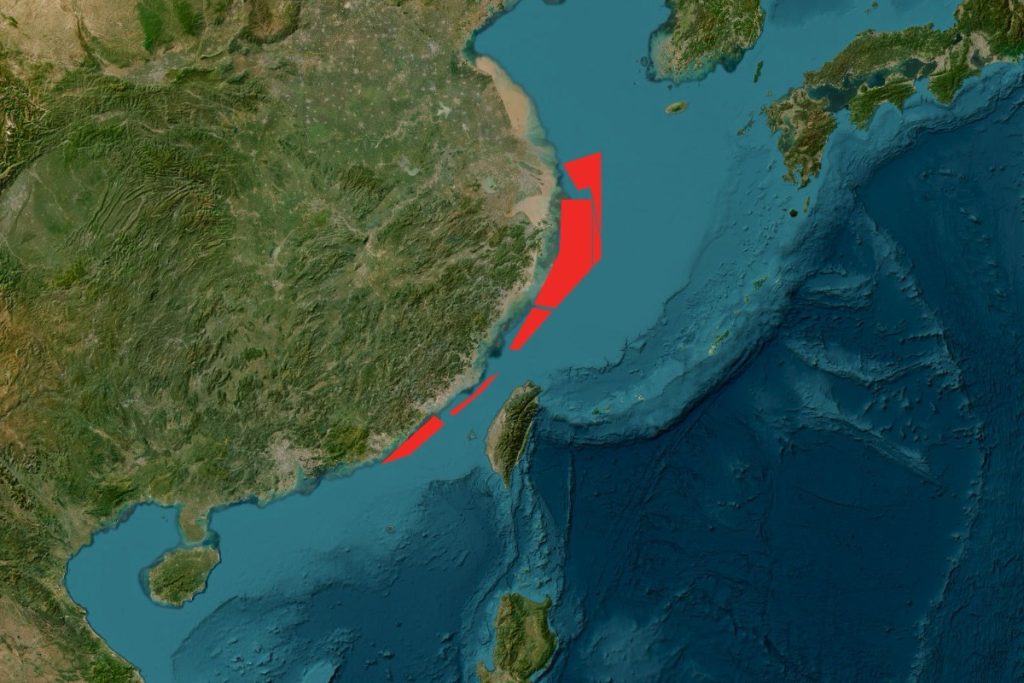China’s military exercises near Taiwan, scheduled from Monday to Wednesday, have significantly escalated tensions in the Taiwan Strait and the broader Indo-Pacific region. These drills, encompassing seven designated zones along China’s eastern coast, are a clear demonstration of Beijing’s assertive stance towards Taiwan, which it considers an inalienable part of its territory despite Taiwan’s self-governing status. The exercises involve reserved airspace zones off the coasts of major Chinese cities and provinces, including Shanghai, Zhejiang, Fujian, and Guangdong, strategically positioned to exert pressure on Taiwan. The placement of these zones, some to the west of Taiwan and others northwest of the island and southwest of Japan, highlights the expansive nature of the drills and their potential impact on regional stability. China’s invocation of reserved airspace, while technically permissible under international aviation regulations with appropriate air traffic control clearance, underscores the disruptive potential of these exercises for civilian air traffic.
Taiwan has responded to China’s military maneuvers by initiating combat readiness exercises and intensifying its monitoring of the situation. This response reflects Taiwan’s determination to defend its sovereignty and democratic way of life against potential Chinese aggression. The escalating military activities in the Taiwan Strait have drawn international attention, particularly from the United States, which maintains a complex relationship with both China and Taiwan. The U.S. adheres to the “One China” policy, recognizing Beijing as the sole government of China but also maintaining unofficial relations with Taiwan, a key U.S. partner in the Indo-Pacific. This delicate balancing act has become increasingly challenging amidst China’s growing assertiveness towards Taiwan.
The current military exercises are viewed as a direct response to recent diplomatic engagements by Taiwanese President Lai Ching-te, including visits to allied nations in the South Pacific and stopovers in Hawaii and Guam, a U.S. territory. These stopovers, while consistent with past practice according to the U.S. State Department, have been met with strong disapproval from Beijing, which views any interaction between Taiwan and the U.S. as a challenge to its sovereignty claims. China’s Defense Ministry has issued stern warnings against any Taiwanese moves towards formal independence, vowing to “smash” such attempts. This strong rhetoric underscores the high stakes involved in the cross-strait relationship and the potential for miscalculation and escalation.
Beyond the designated exercise zones, the scope of China’s military activities appears to extend further. Reports indicate the deployment of around 90 Chinese naval and coast guard vessels near Taiwan, Japan’s southern islands, and the East and South China Seas. This widespread deployment, targeting what is known as the “first island chain,” a strategic defense line extending from Japan to the Philippines via Taiwan, marks a significant escalation in China’s military posture. The first island chain is a key element of U.S. defense strategy in the region, aiming to contain China’s military influence in the Pacific Ocean. China’s actions suggest a growing intent to challenge this strategic framework and assert its military presence in the region.
Detailed reports from the Taiwanese Ministry of National Defense provide further insight into the scale and nature of China’s military activities. These reports document the deployment of 47 military aircraft and 12 naval vessels, along with nine government ships, around Taiwan. Furthermore, unconfirmed reports suggest the Chinese military conducted a simulated blockade exercise, practicing strikes on foreign warships and the interception of military and civilian aircraft. These activities, if confirmed, represent a significant escalation in the type and intensity of Chinese military exercises near Taiwan. While the Chinese military has not officially announced the commencement of these drills, the observed activities strongly suggest a coordinated and purposeful military operation.
These latest exercises follow a pattern of increasing military pressure from China towards Taiwan. Earlier this year, China conducted two large-scale military exercises, Joint Sword-2024A in May and Joint Sword-2024B in October, both in response to actions by Taiwanese President Lai Ching-te. These exercises, along with the mock blockade in August 2022 following then-U.S. House Speaker Nancy Pelosi’s visit to Taiwan, demonstrate a clear trend of escalating military responses from Beijing. The increasing frequency and intensity of these exercises underscore the growing risk of military conflict in the Taiwan Strait and the need for careful diplomacy and communication to manage tensions. The presence of Chinese naval vessels in Japan’s southwestern waters near Taiwan, including destroyers, frigates, and a spy ship transiting the strategically important Miyako Strait, further complicates the regional security landscape. These deployments, along with the transit of a Chinese maritime patrol aircraft through the same strait, suggest a broader strategic context for the current military exercises and highlight China’s growing military presence in the region. Whether these specific deployments are directly related to the announced exercises remains unclear, but they contribute to a heightened sense of tension and underscore the complex interplay of military and diplomatic factors in the region.

